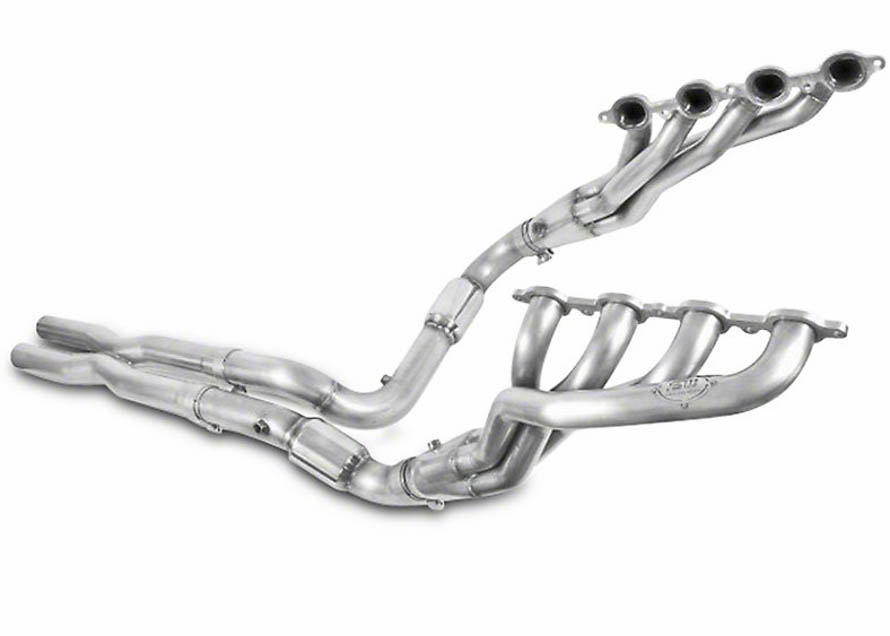The main issue with the factory Sierra exhaust manifolds is that they are designed to be cheap and easy to fit. The winning design that best combines these two criteria is the log style manifold. As the name implies, this type of manifold essentially looks like a log. The primary tubes are extremely short and lead into a common log-like tube before heading to the cats. These OEM log manifold are inefficient and restrictive; exhaust scavenging is marginal, at that, and essentially the exhaust pulses are jamming up as they try to escape the cylinder. This causes your Sierra to waste a lot of horsepower just in order to vacate the cylinder head after combustion is complete.
Contents
Shop Sierra Headers
The factory Sierra Y-Pipe setup doesn't hinder your ability to add a set of headers to your truck. Whether you're looking to preserve the factory Y-Pipe style or upgrade to a performance X-Pipe style, you'll find the appropriate set of headers.
